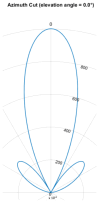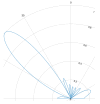Hand Gesture Recognition on Edge Devices: Sensor Technologies, Algorithms, and Processing Hardware
- PMID: 40292803
- PMCID: PMC11945630
- DOI: 10.3390/s25061687
Hand Gesture Recognition on Edge Devices: Sensor Technologies, Algorithms, and Processing Hardware
Abstract
Hand gesture recognition (HGR) is a convenient and natural form of human-computer interaction. It is suitable for various applications. Much research has already focused on wearable device-based HGR. By contrast, this paper gives an overview focused on device-free HGR. That means we evaluate HGR systems that do not require the user to wear something like a data glove or hold a device. HGR systems are explored regarding technology, hardware, and algorithms. The interconnectedness of timing and power requirements with hardware, pre-processing algorithm, classification, and technology and how they permit more or less granularity, accuracy, and number of gestures is clearly demonstrated. Sensor modalities evaluated are WIFI, vision, radar, mobile networks, and ultrasound. The pre-processing technologies stereo vision, multiple-input multiple-output (MIMO), spectrogram, phased array, range-doppler-map, range-angle-map, doppler-angle-map, and multilateration are explored. Classification approaches with and without ML are studied. Among those with ML, assessed algorithms range from simple tree structures to transformers. All applications are evaluated taking into account their level of integration. This encompasses determining whether the application presented is suitable for edge integration, their real-time capability, whether continuous learning is implemented, which robustness was achieved, whether ML is applied, and the accuracy level. Our survey aims to provide a thorough understanding of the current state of the art in device-free HGR on edge devices and in general. Finally, on the basis of present-day challenges and opportunities in this field, we outline which further research we suggest for HGR improvement. Our goal is to promote the development of efficient and accurate gesture recognition systems.
Keywords: 4G; 5G; AI accelerators; LTE; WiFi; algorithms; artificial intelligence; edge machine learning; hand gesture recognition; image processing; lidar; radar; signal processing; ultrasound; vision.
Conflict of interest statement
Authors Elfi Fertl and Georg Stettinger were employed by the company Infineon Technologies AG. The remaining authors declare that the research was conducted in the absence of any commercial or financial relationships that could be construed as a potential conflict of interest.
Figures
















Similar articles
-
End-to-End Ultrasonic Hand Gesture Recognition.Sensors (Basel). 2024 Apr 25;24(9):2740. doi: 10.3390/s24092740. Sensors (Basel). 2024. PMID: 38732843 Free PMC article.
-
On the Effect of Training Convolution Neural Network for Millimeter-Wave Radar-Based Hand Gesture Recognition.Sensors (Basel). 2021 Jan 2;21(1):259. doi: 10.3390/s21010259. Sensors (Basel). 2021. PMID: 33401744 Free PMC article.
-
sEMG-Based Hand Gesture Recognition Using Binarized Neural Network.Sensors (Basel). 2023 Jan 28;23(3):1436. doi: 10.3390/s23031436. Sensors (Basel). 2023. PMID: 36772476 Free PMC article.
-
Static and Dynamic Hand Gestures: A Review of Techniques of Virtual Reality Manipulation.Sensors (Basel). 2024 Jun 9;24(12):3760. doi: 10.3390/s24123760. Sensors (Basel). 2024. PMID: 38931542 Free PMC article. Review.
-
Emerging Wearable Interfaces and Algorithms for Hand Gesture Recognition: A Survey.IEEE Rev Biomed Eng. 2022;15:85-102. doi: 10.1109/RBME.2021.3078190. Epub 2022 Jan 20. IEEE Rev Biomed Eng. 2022. PMID: 33961564 Review.
Cited by
-
Real-Time Hand Gesture Recognition in Clinical Settings: A Low-Power FMCW Radar Integrated Sensor System with Multiple Feature Fusion.Sensors (Basel). 2025 Jul 4;25(13):4169. doi: 10.3390/s25134169. Sensors (Basel). 2025. PMID: 40648424 Free PMC article.
References
-
- Darrell T., Pentland A. Space-time gestures; Proceedings of the IEEE Conference on Computer Vision and Pattern Recognition; New York, NY, USA. 15–17 June 1993; pp. 335–340. - DOI
-
- Ren Z., Meng J., Yuan J. Depth camera based hand gesture recognition and its applications in Human-Computer-Interaction; Proceedings of the 2011 8th International Conference on Information, Communications & Signal Processing; Singapore. 13–16 December 2011; pp. 1–5. - DOI
-
- Liu J., Liu H., Chen Y., Wang Y., Wang C. Wireless Sensing for Human Activity: A Survey. IEEE Commun. Surv. Tutor. 2020;22:1629–1645. doi: 10.1109/COMST.2019.2934489. - DOI
-
- Pan M., Tang Y., Li H. State-of-the-Art in Data Gloves: A Review of Hardware, Algorithms, and Applications. IEEE Trans. Instrum. Meas. 2023;72:4002515. doi: 10.1109/TIM.2023.3243614. - DOI
-
- Tang Y., Pan M., Li H., Cao X. A Convolutional-Transformer-Based Approach for Dynamic Gesture Recognition of Data Gloves. IEEE Trans. Instrum. Meas. 2024;73:2518813. doi: 10.1109/TIM.2024.3400361. - DOI
Publication types
MeSH terms
Grants and funding
LinkOut - more resources
Full Text Sources

